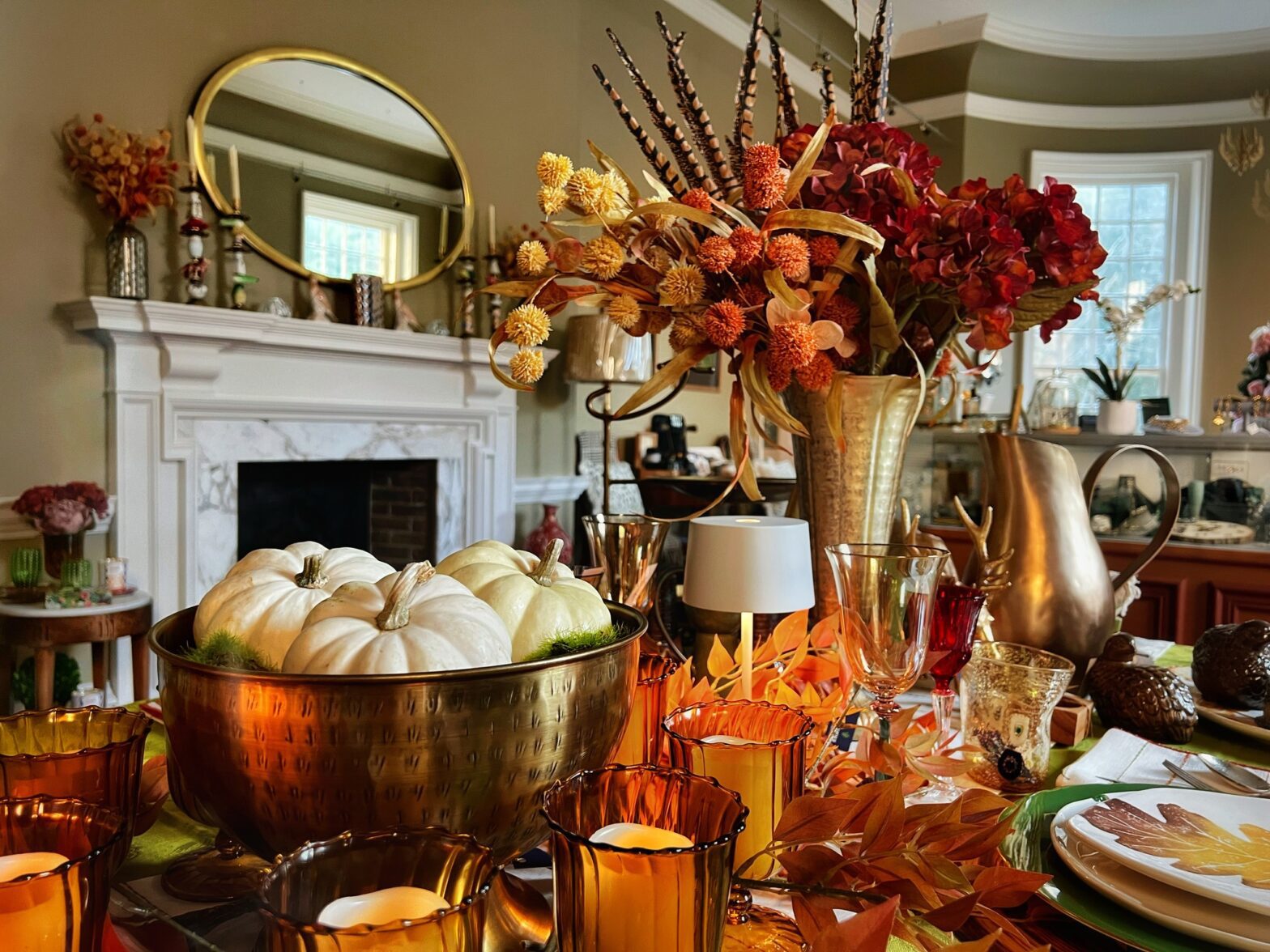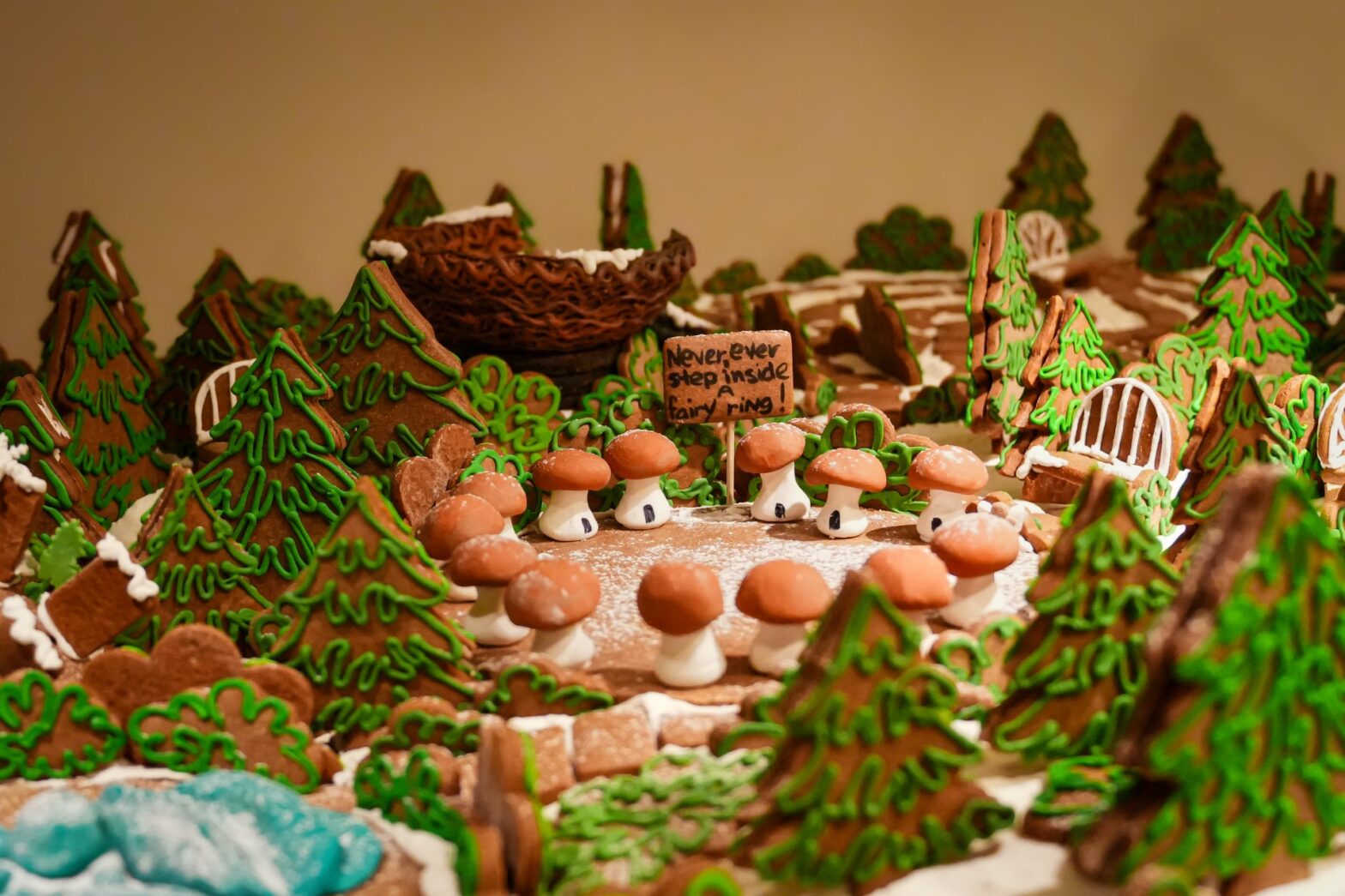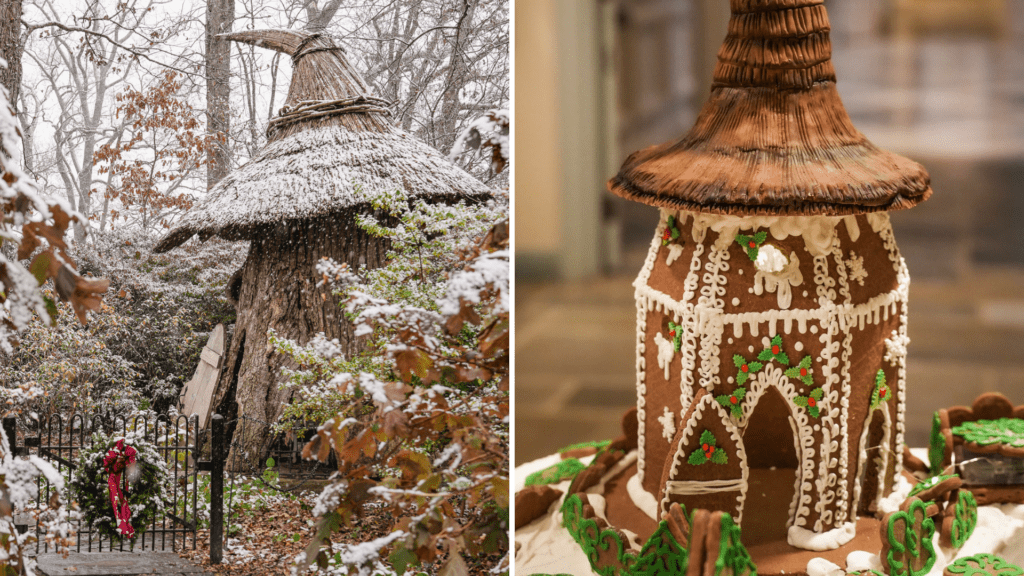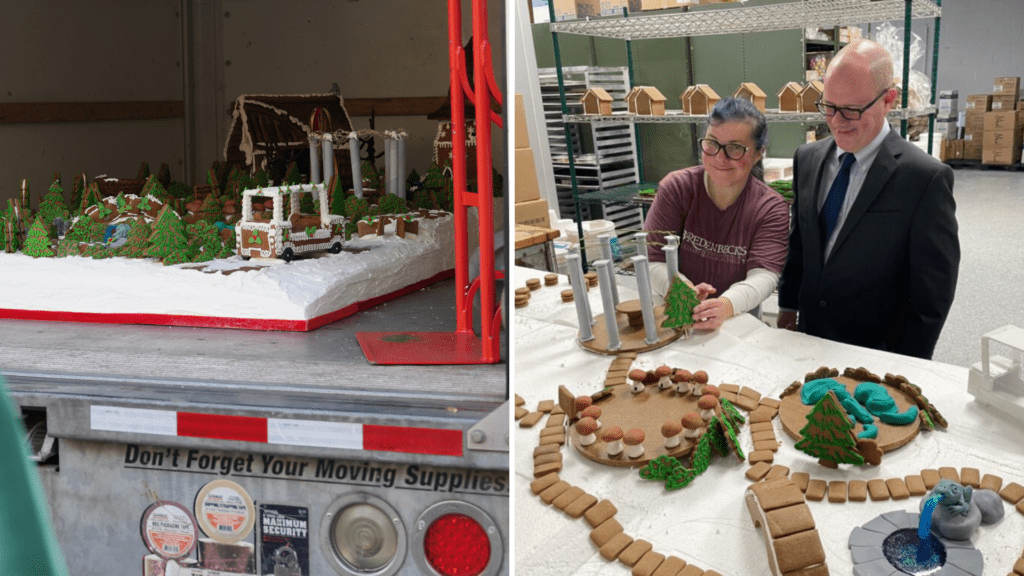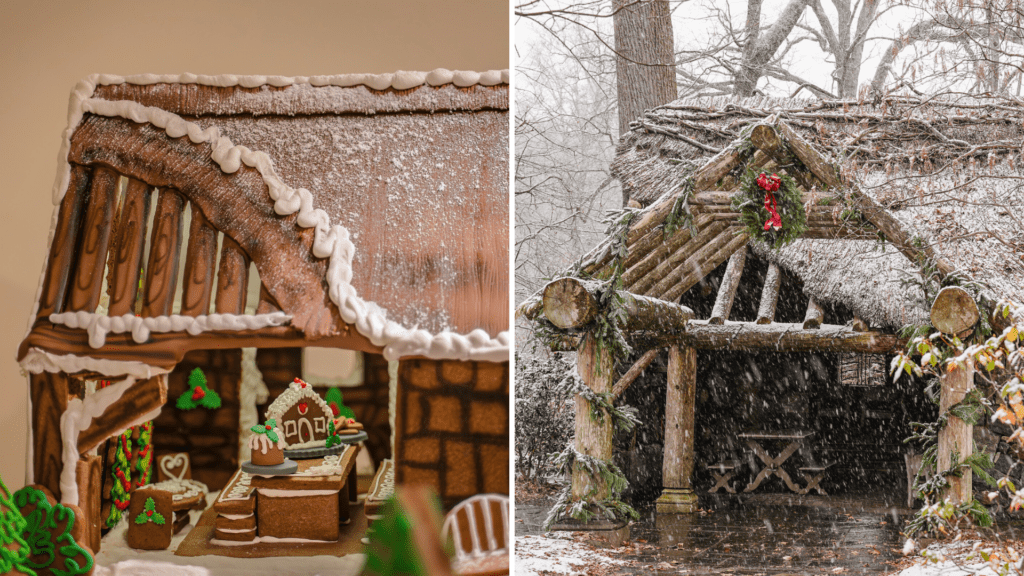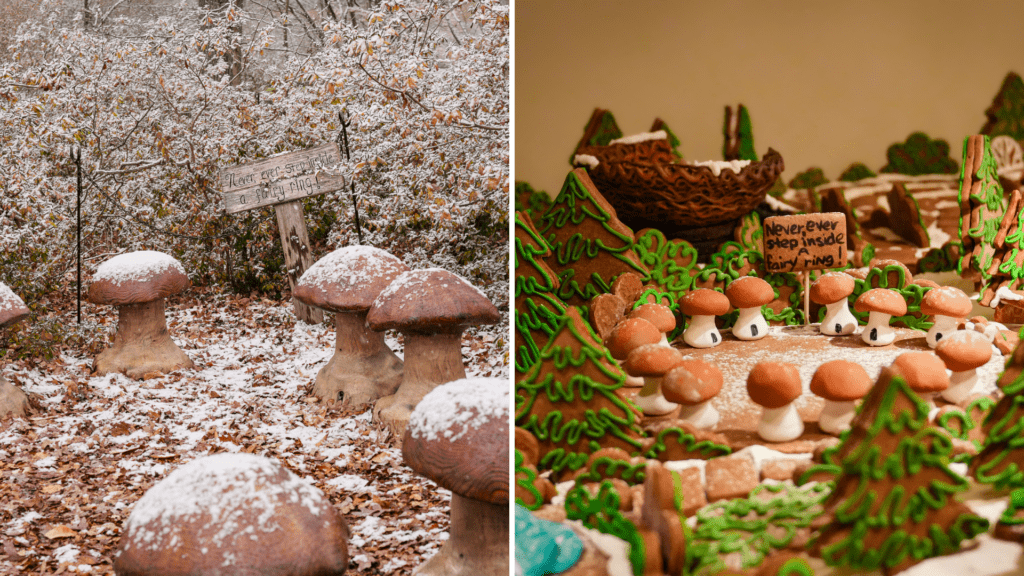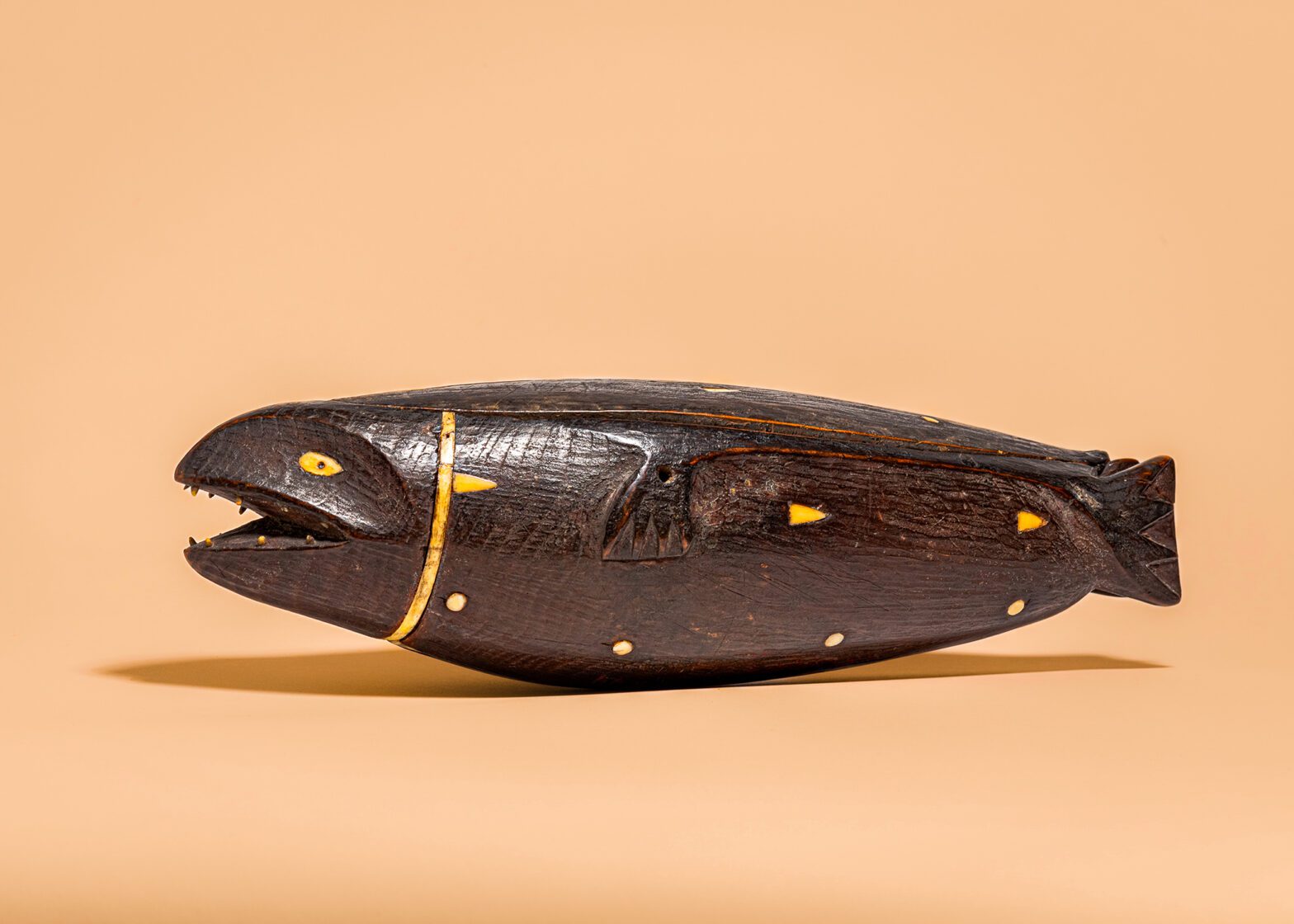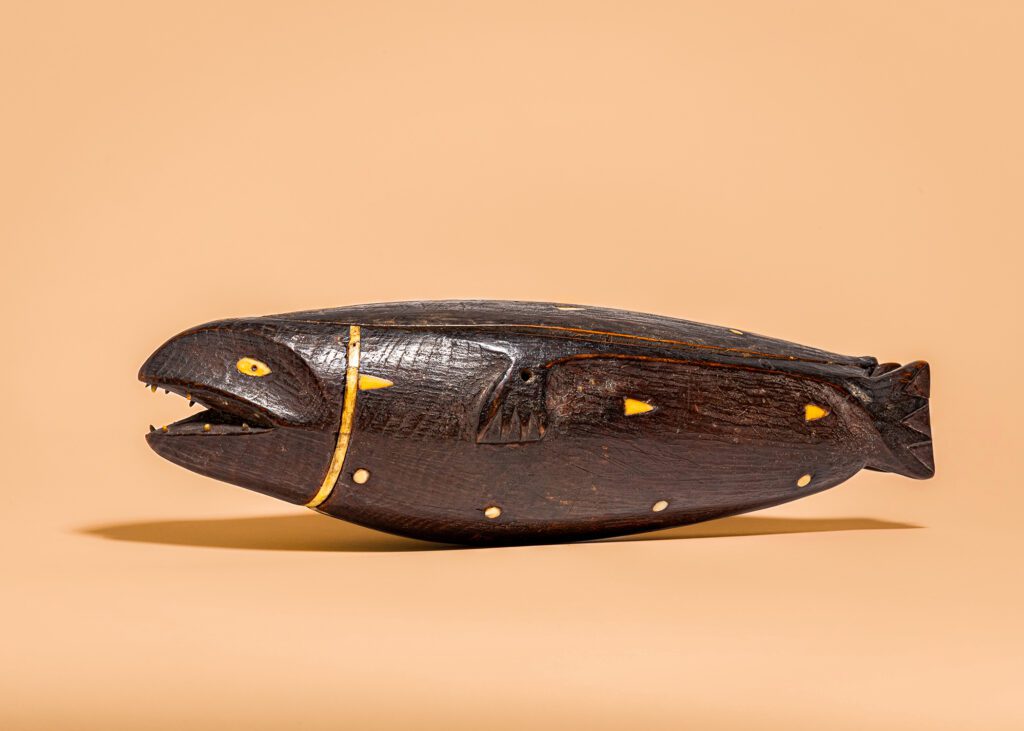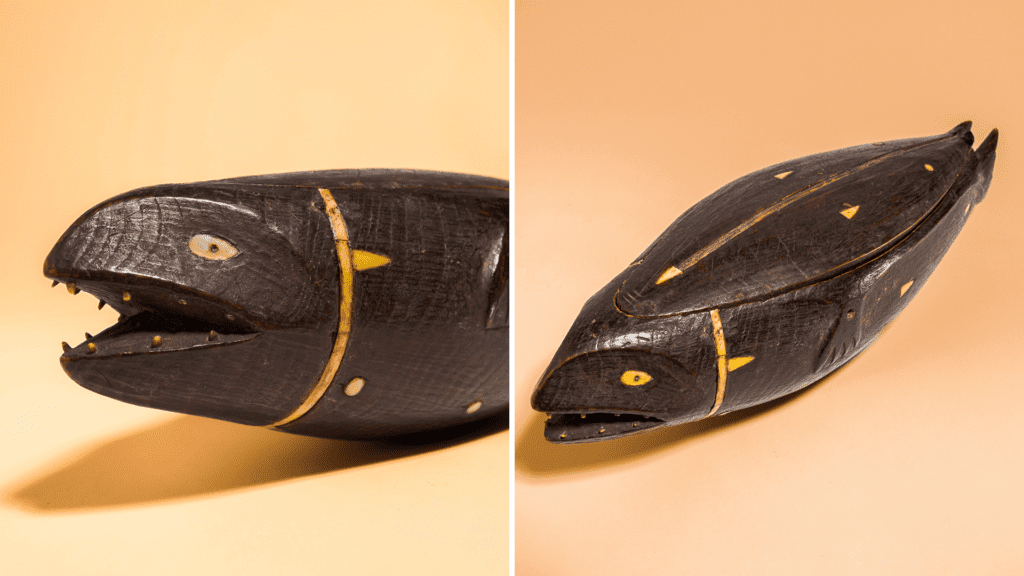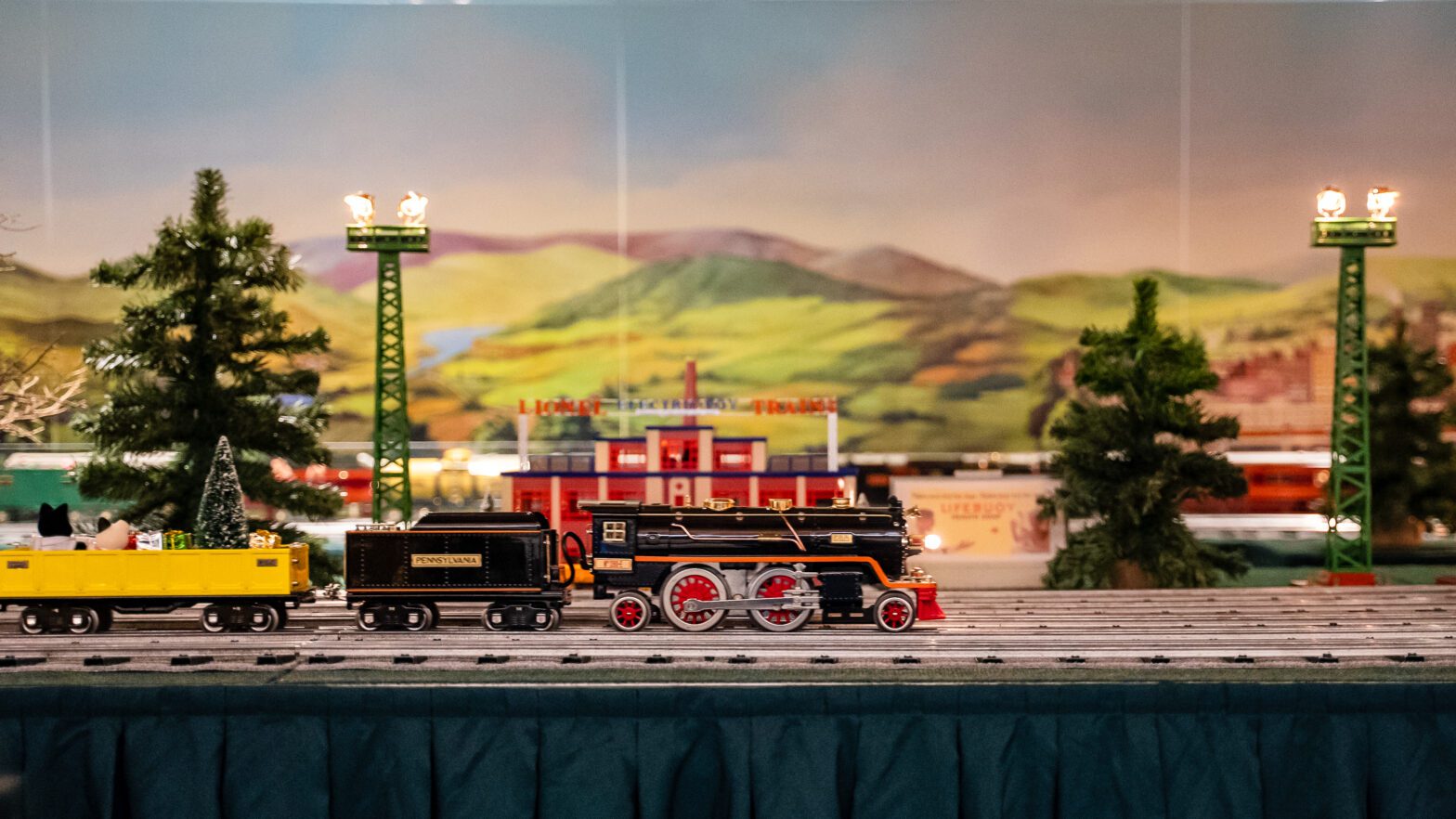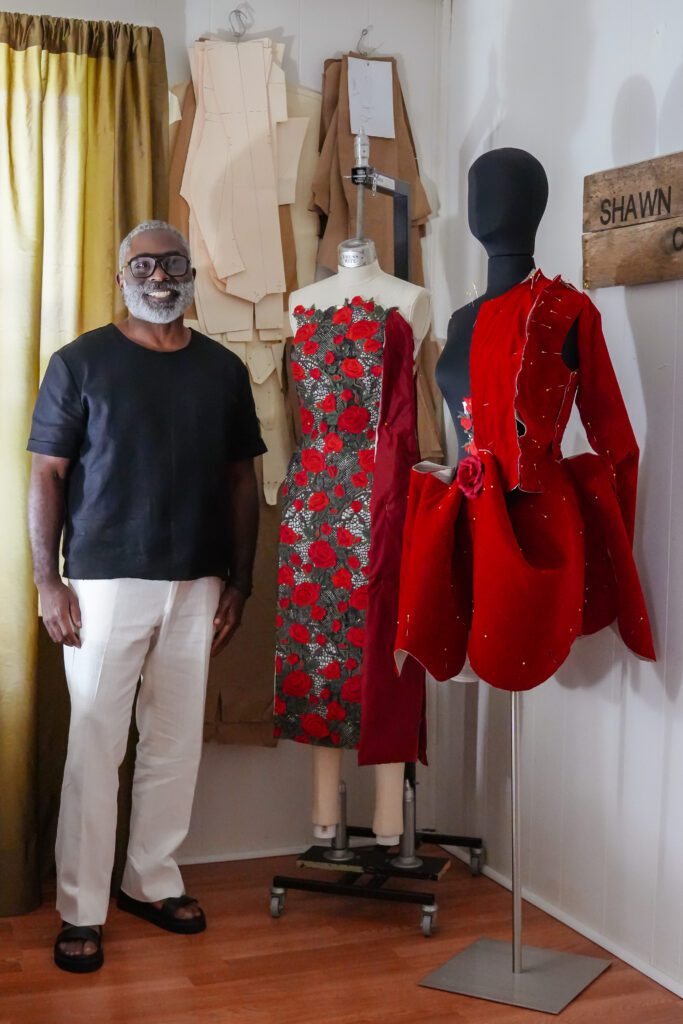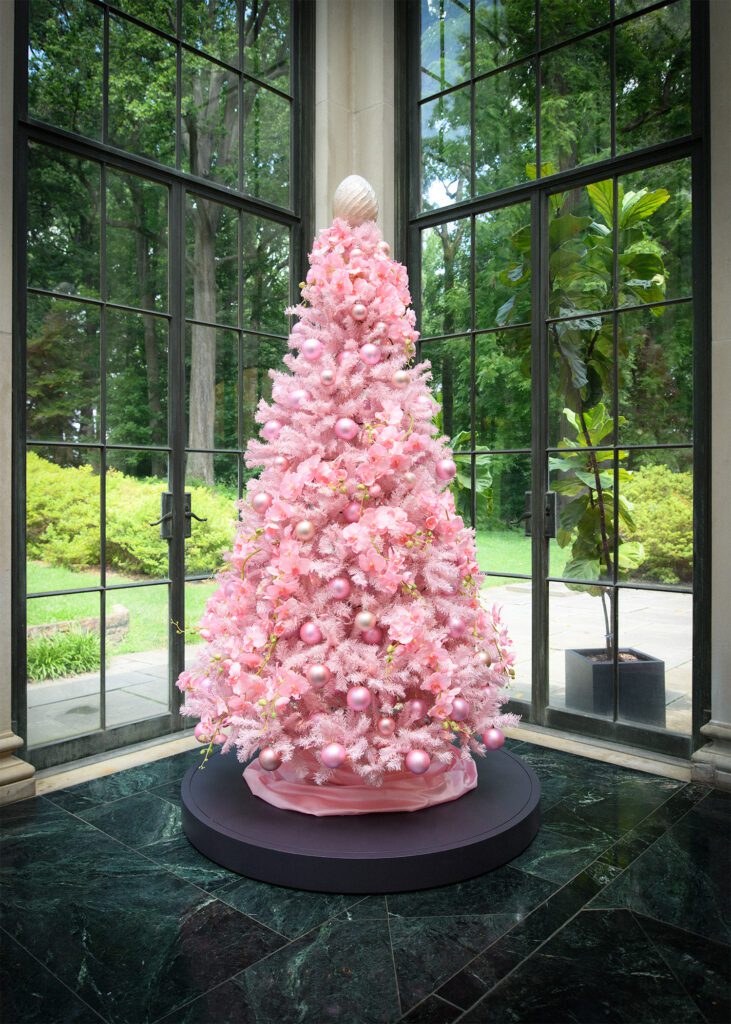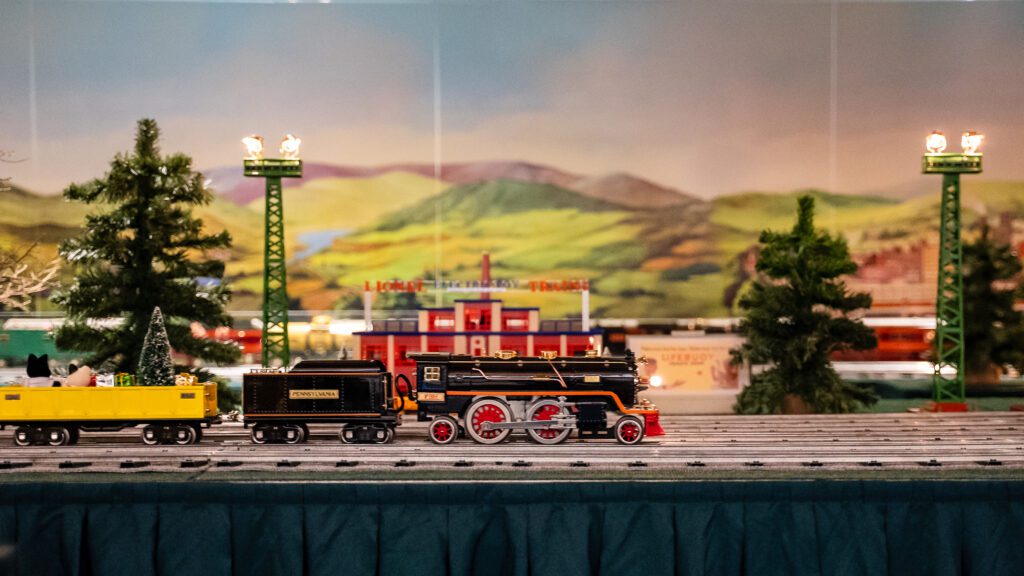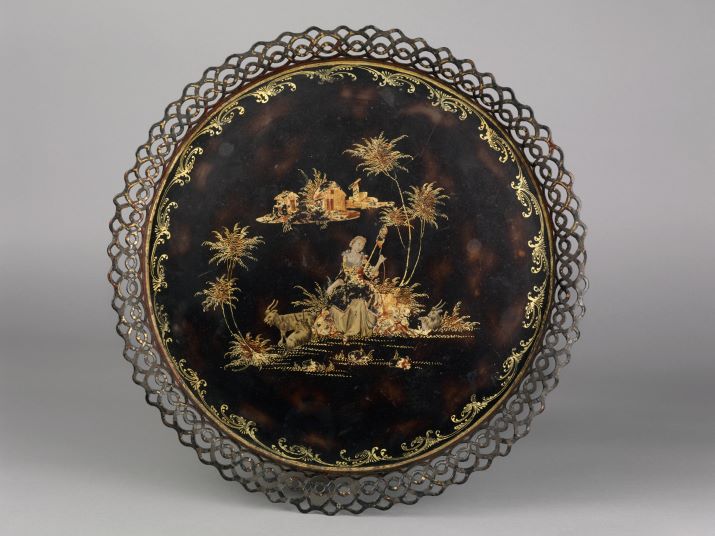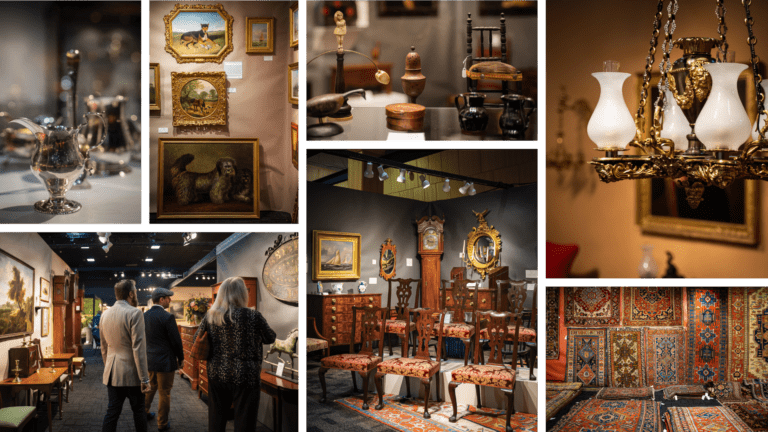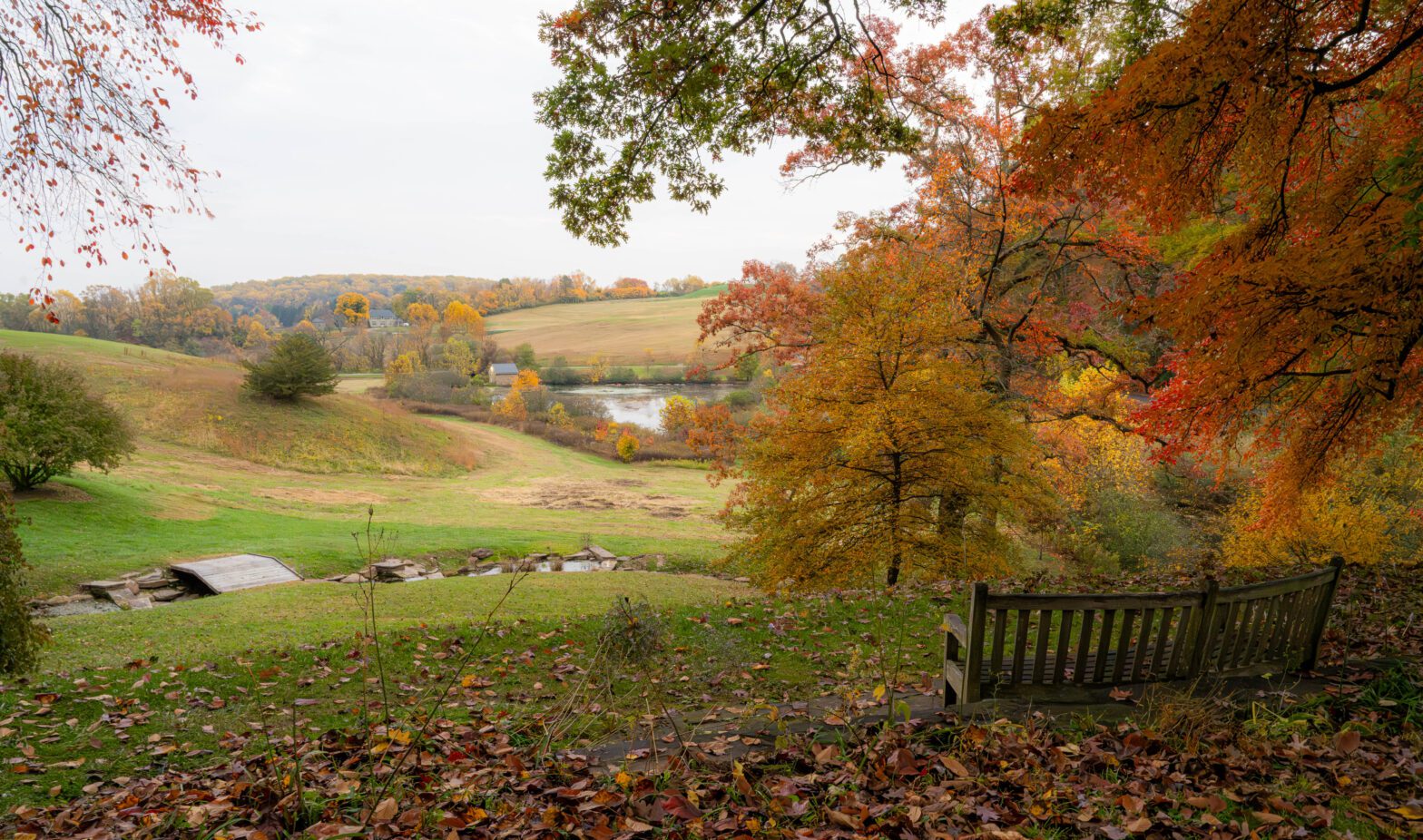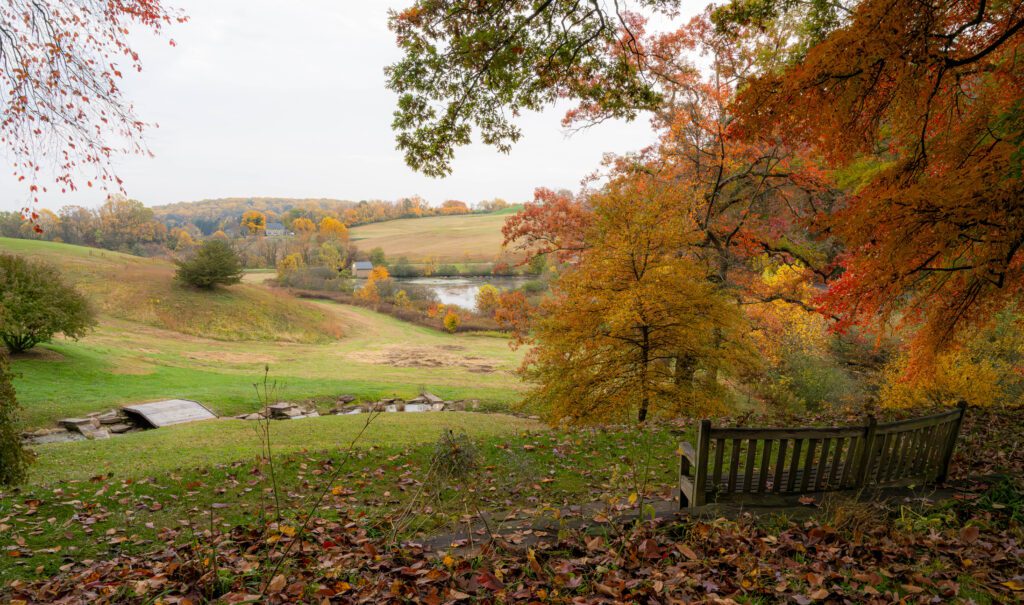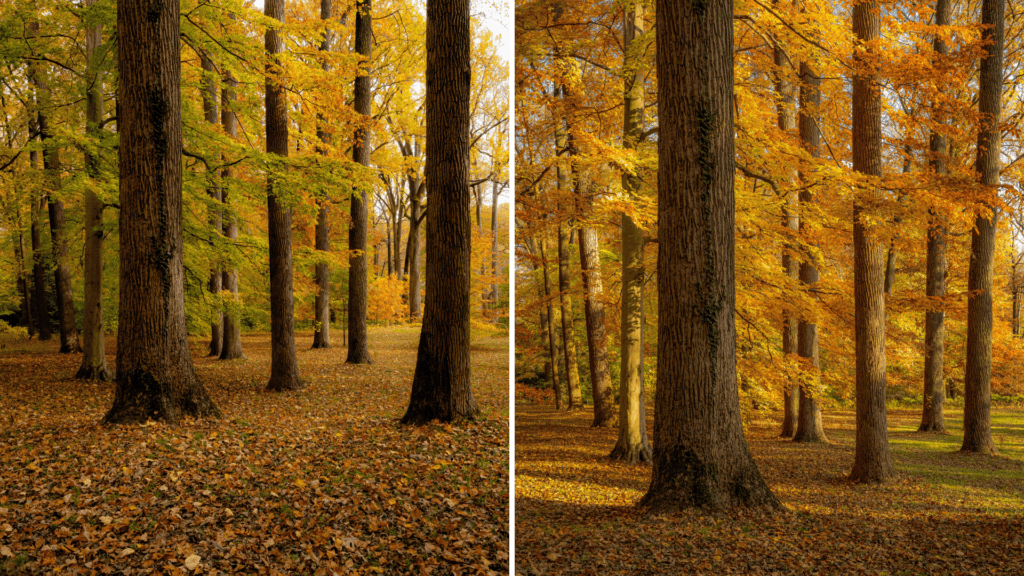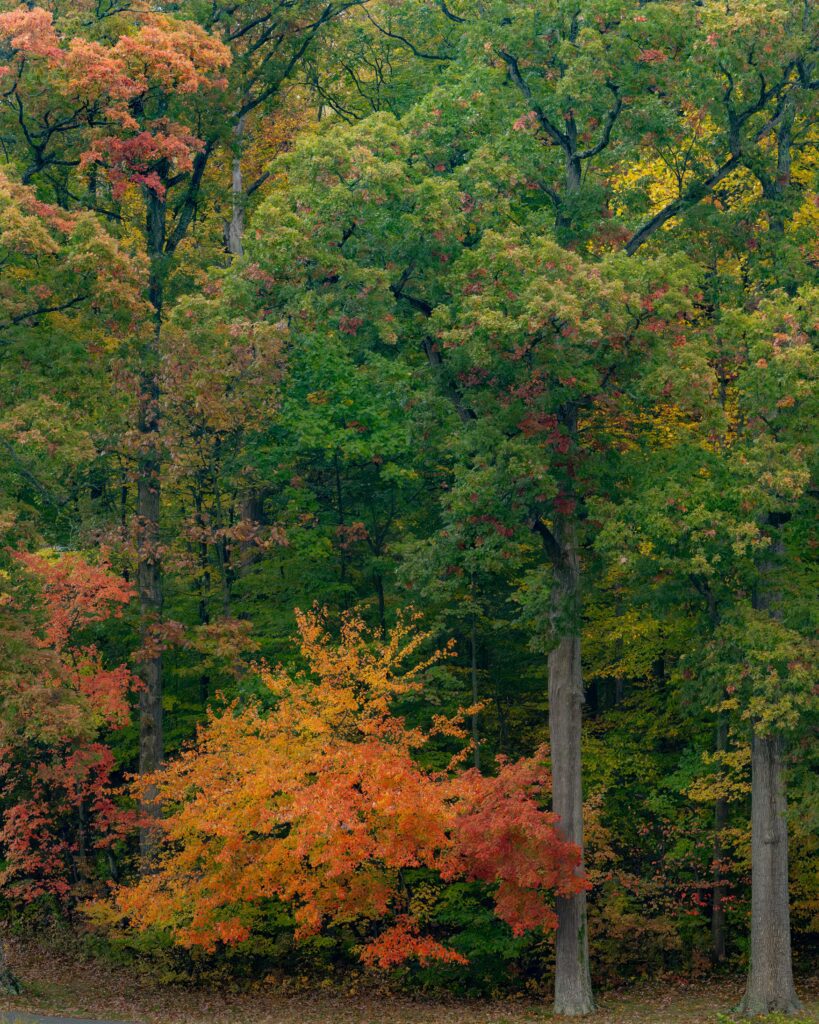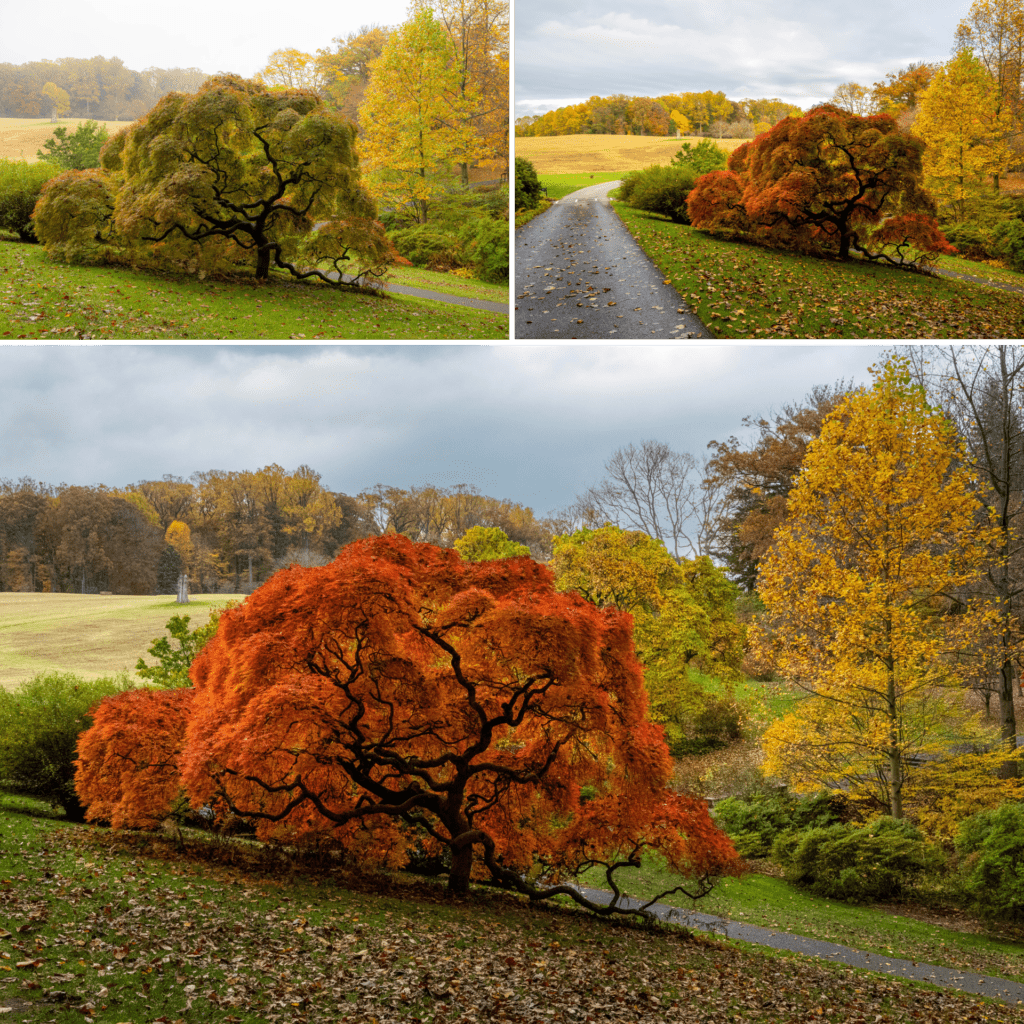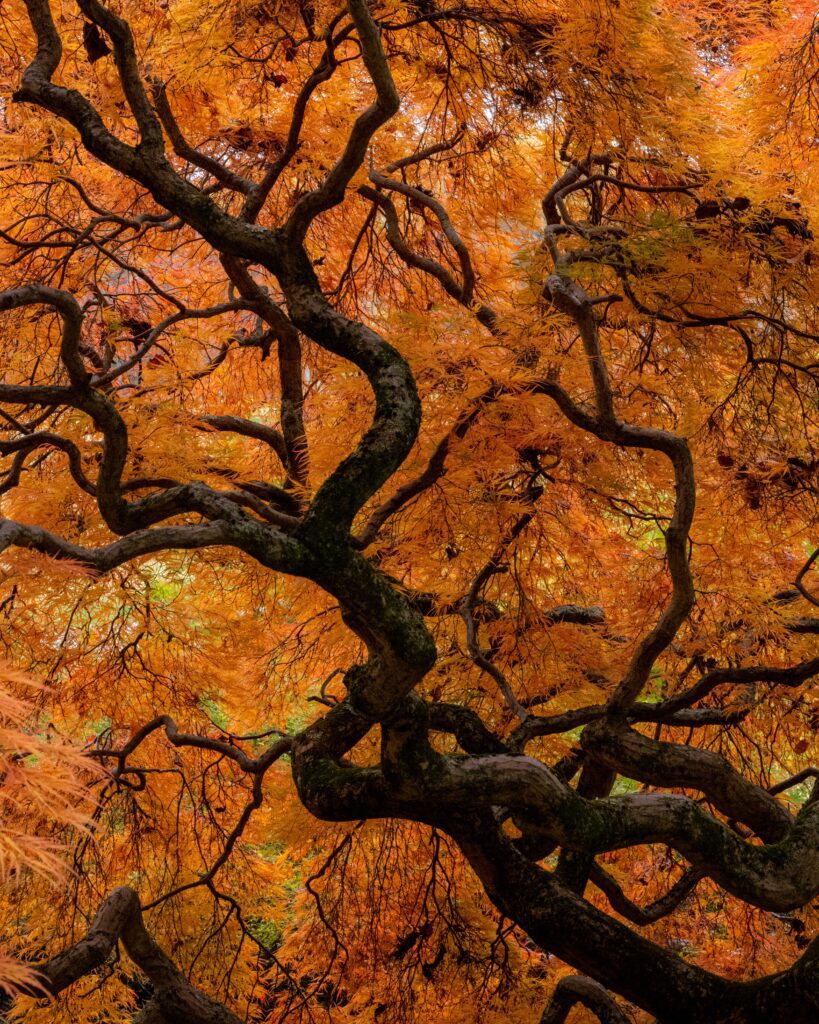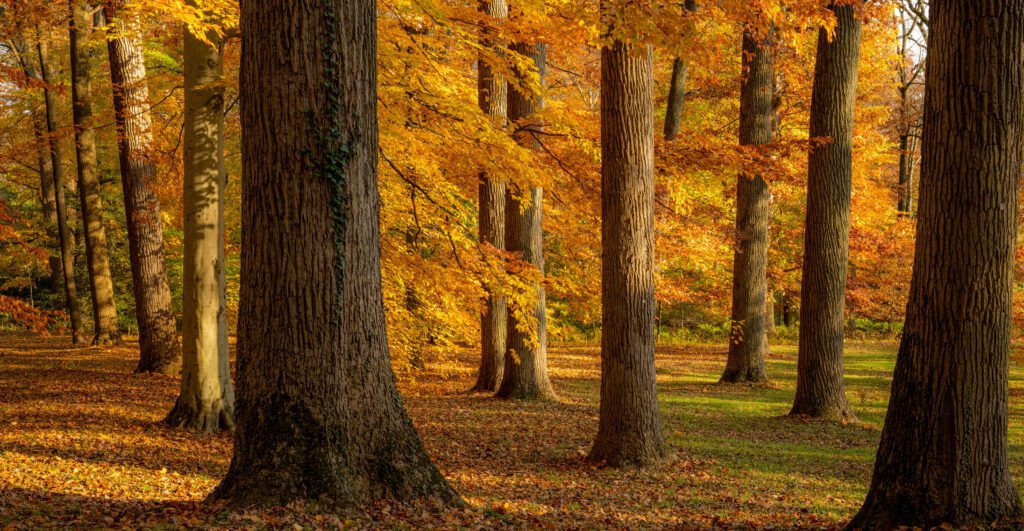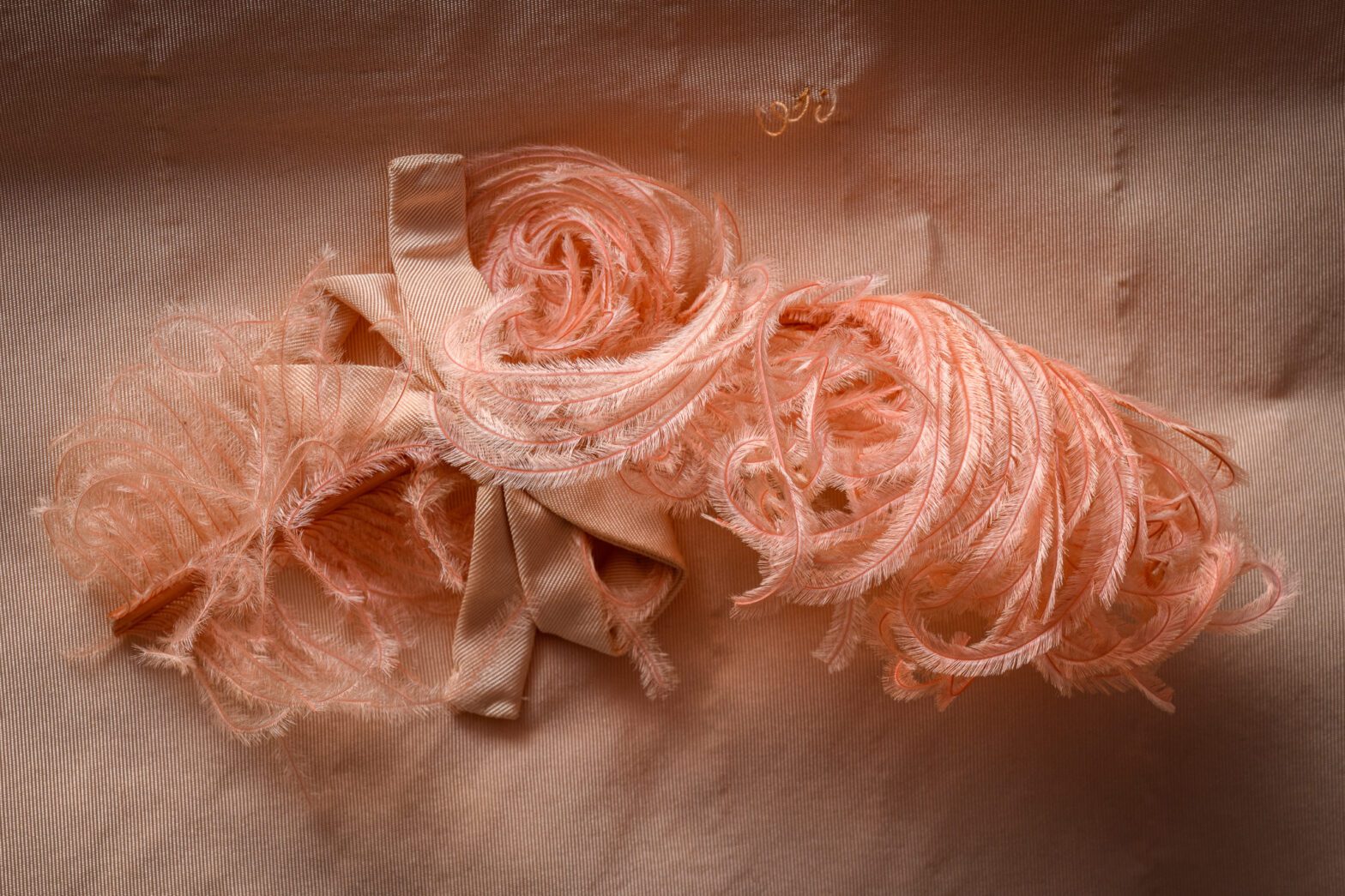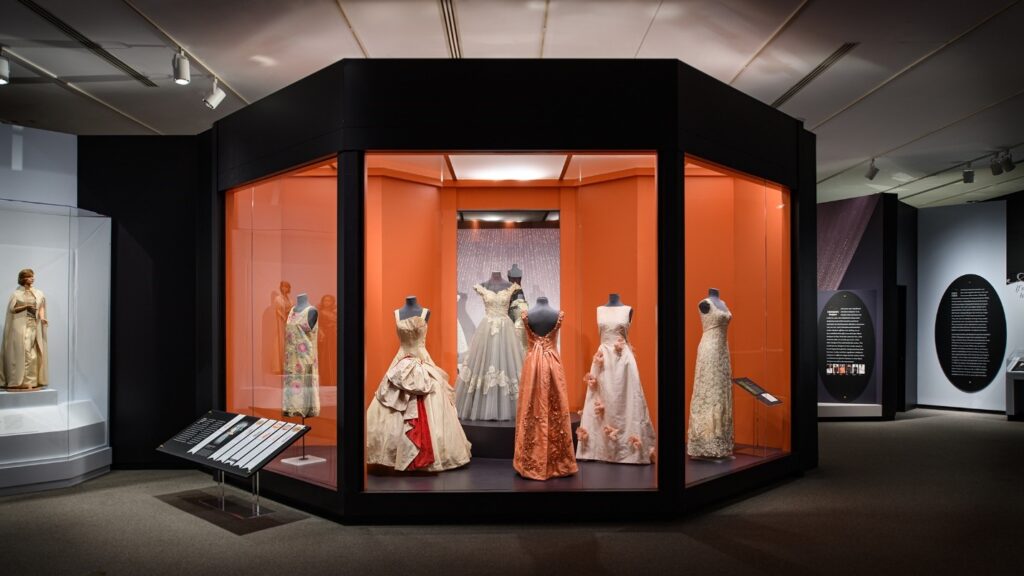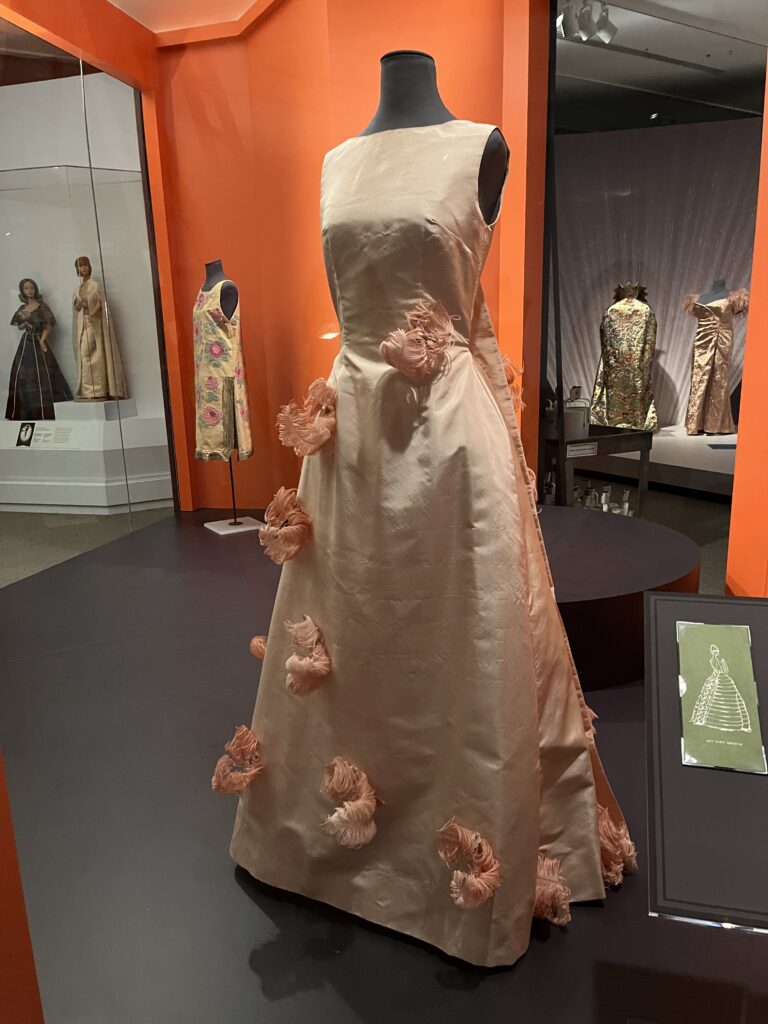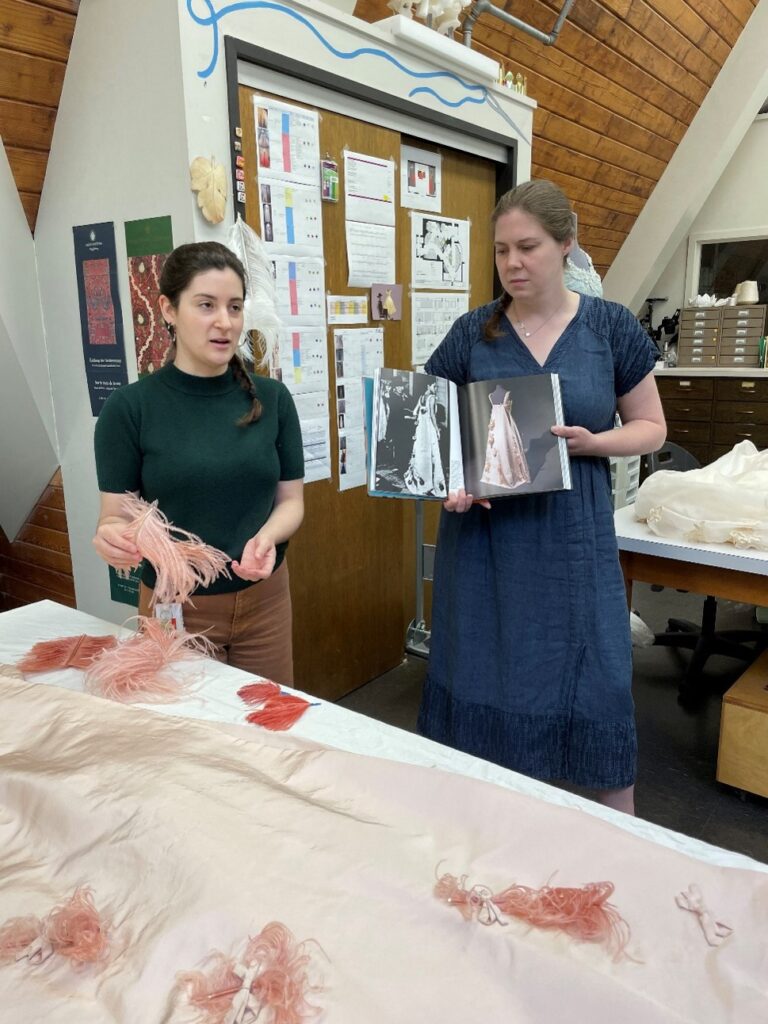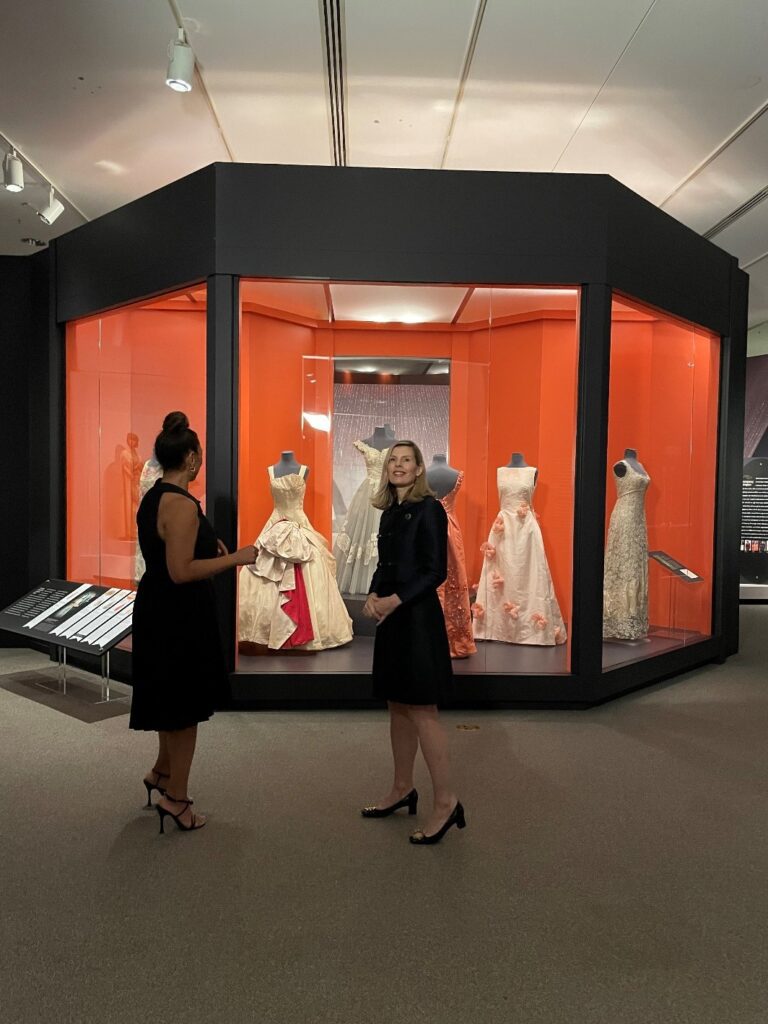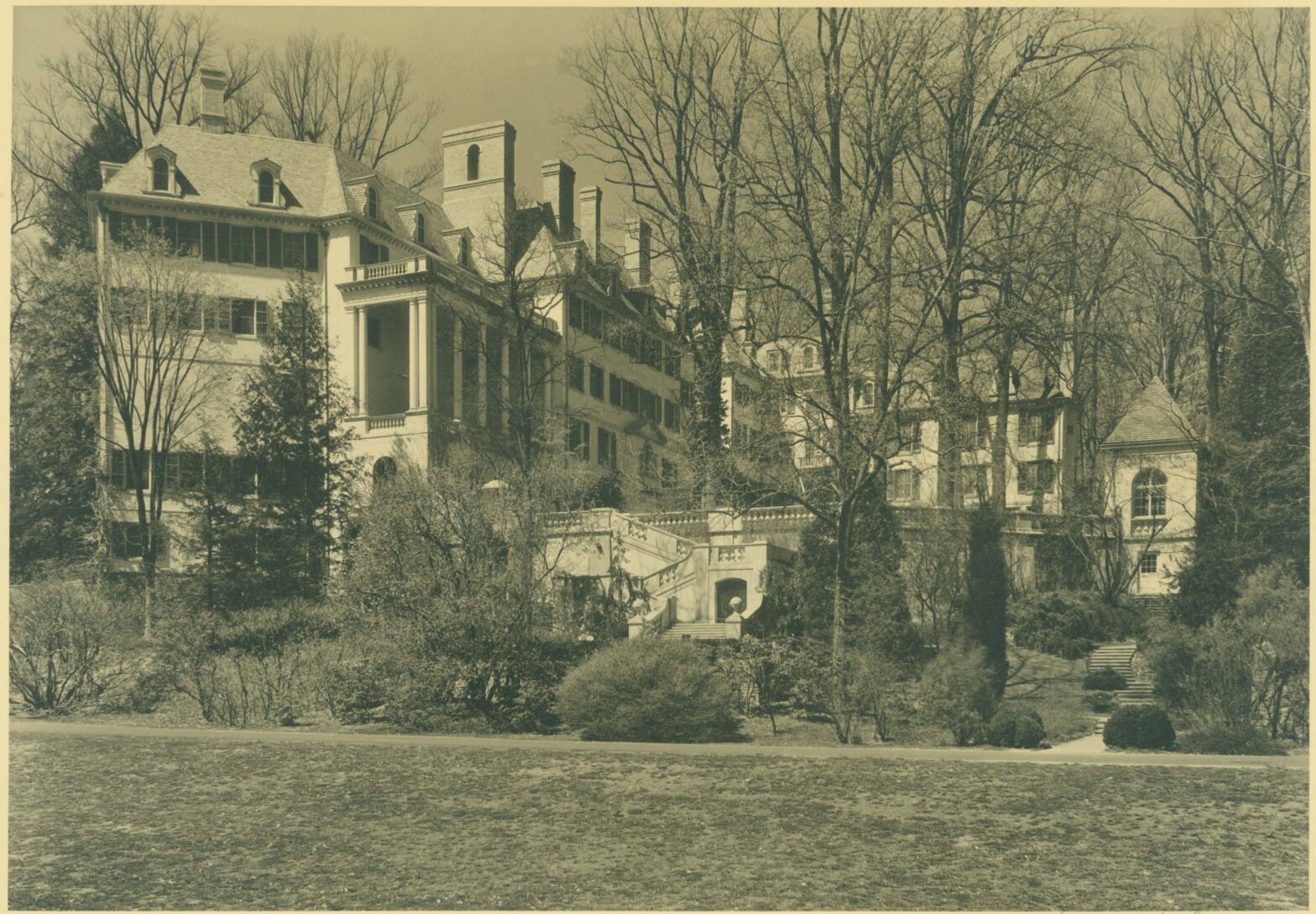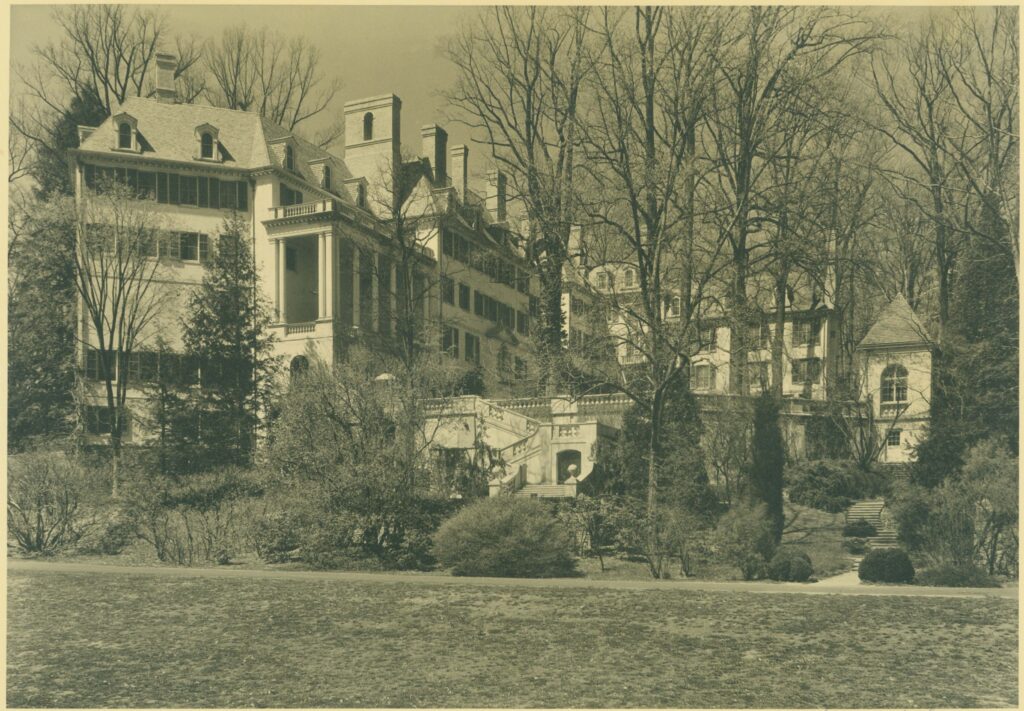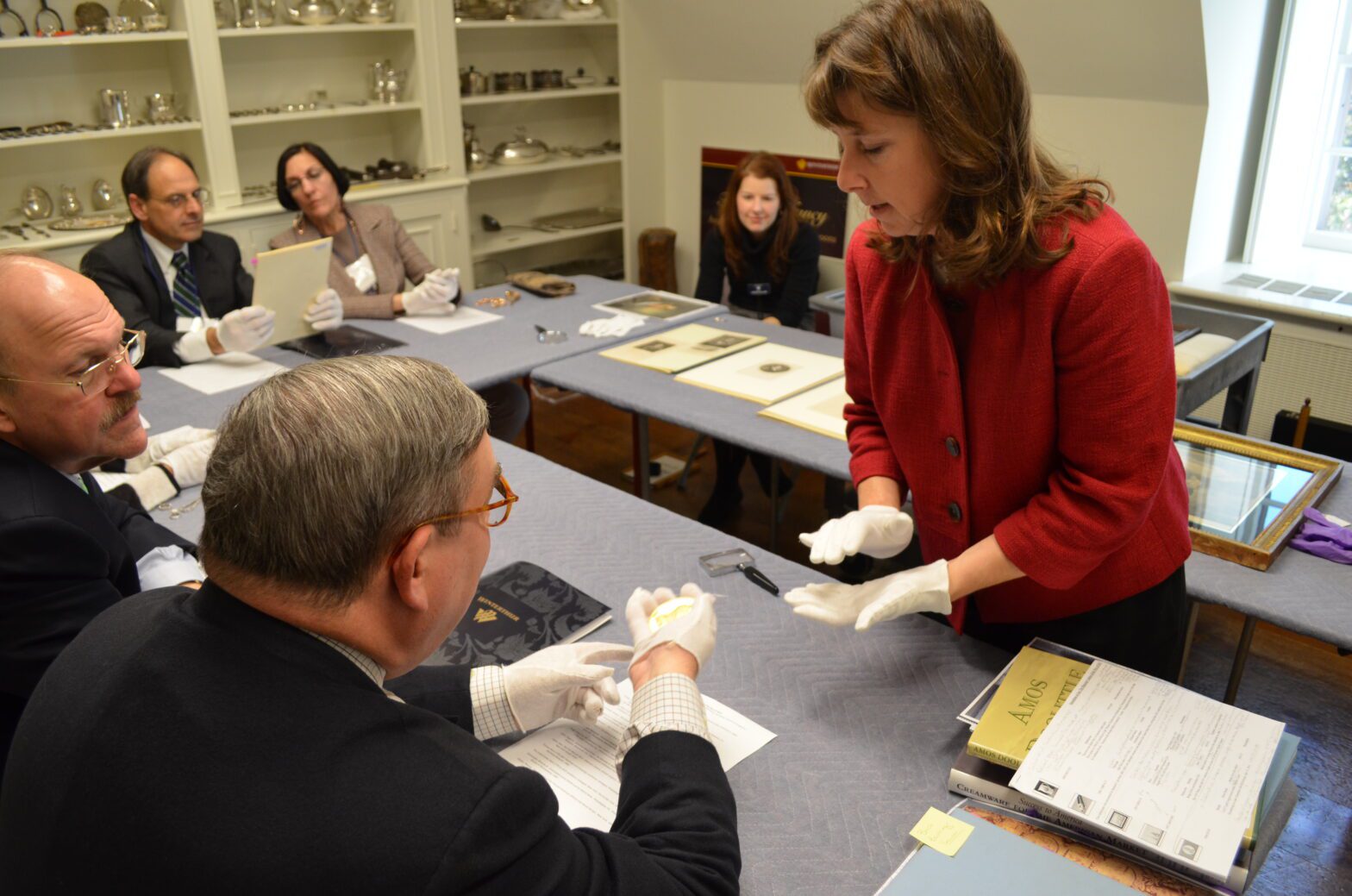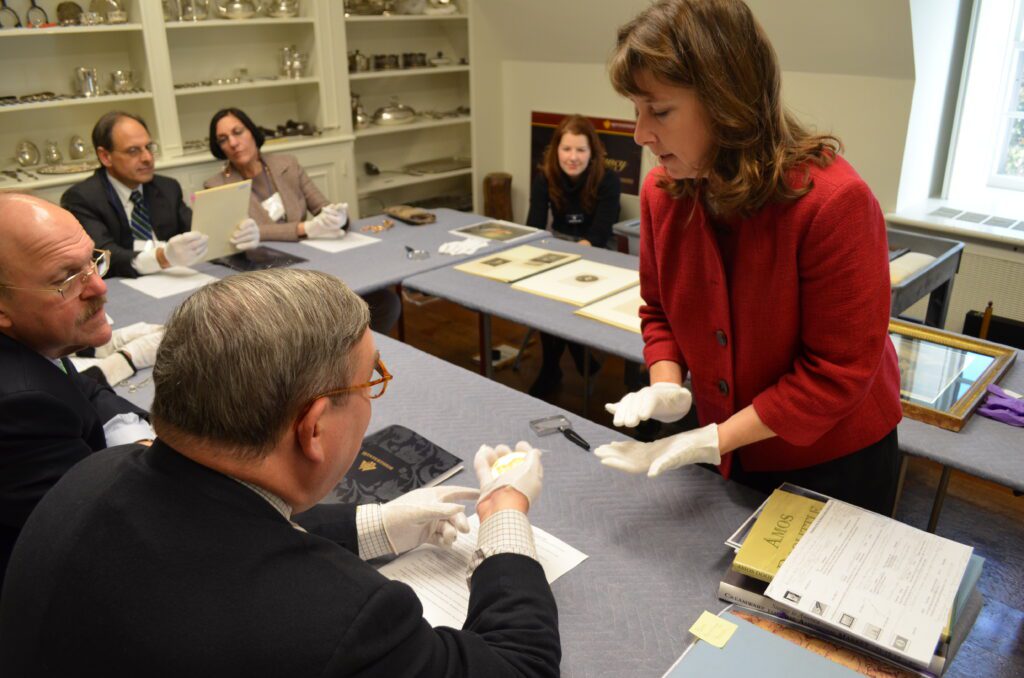By Rachel Schmid
When planning a table setting, I like to think about the feeling I want my guests to have, not only when they see the table for the first time but also while they enjoy their meal. I want to encourage conversation by creating a festive, welcoming, and comfortable space. The rules for setting a table have been rewritten countless times over the years, and most people believe that there are three main styles of table settings: basic, casual, and formal. When I create a tablescape, I prefer to blend the three, drawing elements from each to make my visitors feel like they are both honored guests and close friends.
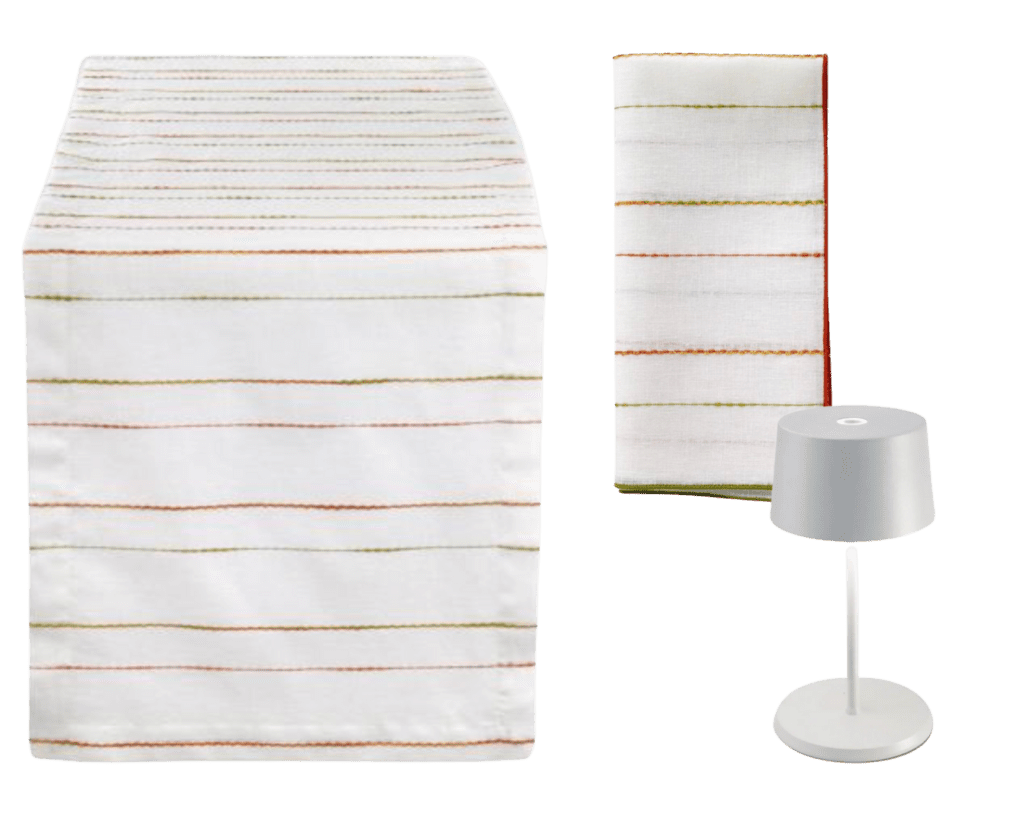
Porto Table Runner, $50
Porto Napkins, Set of 2, $40
Mini Cordless Table Lamp, $149
I choose my linens first, based on the occasion or season. In the spring and summer months, I prefer to keep things lighter, reflecting the airy nature of the weather. In the autumn and winter months, I gravitate toward moodier tones and heavier fabrics, often layering linens and patterns for added coziness.
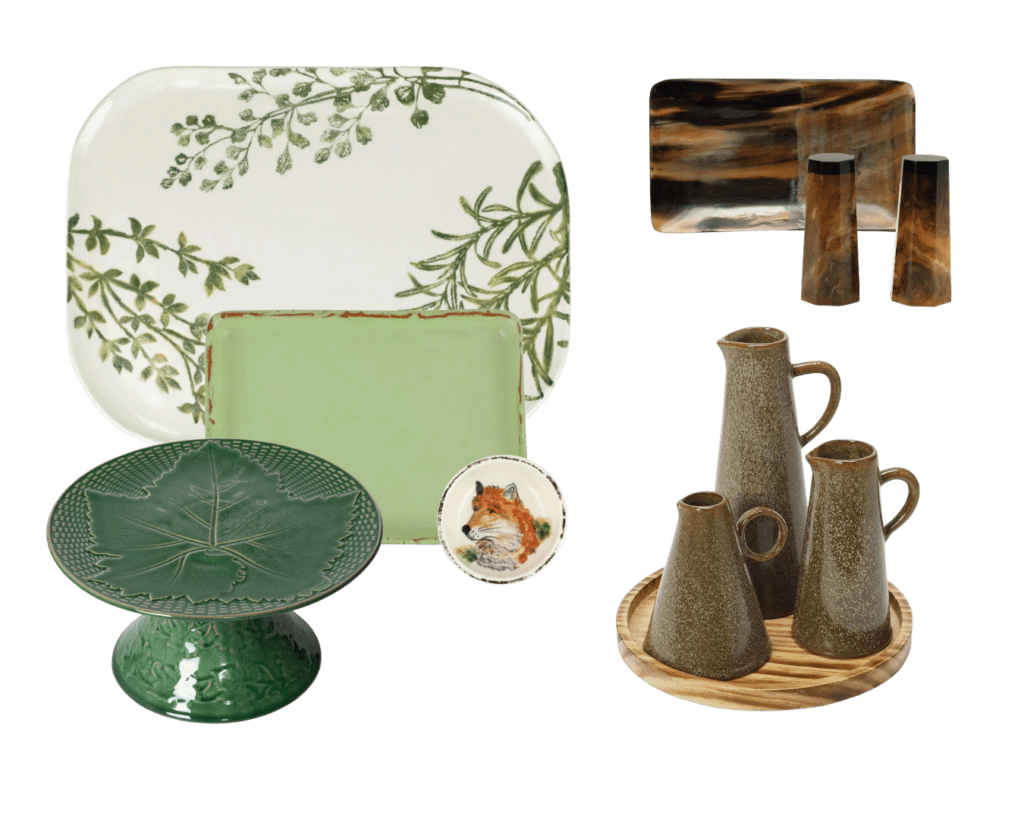
Flora Fauna Platter, $133
Green Cucina Fresca Tray, $45
Wild Fox Condiment Bowl, $35
Small Green Glazed Cake Stand, $46
Horn Tray, $28
Horn Finish Salt & Pepper Shakers, $20
Stone Pitchers on Pine Tray, Four-piece Set, $62
After the cloths are in place, I create the centerpiece. The centerpiece is the showstopper of a table setting, the focal point that will capture your guests’ attention. When planning a centerpiece, I keep three things in mind: height, texture, and lighting. I also build centerpieces in levels. First is the base, the lowest level. Then comes the middle level, which sits just above the base. Last is the top level, which is the highest. Using this structure helps elevate the setting and move the guests’ eyes upward to what is typically the most impressive part of the table. However, I never want to obscure anyone’s vision, so I choose narrower items for the tallest pieces or place them where I know they won’t be in the way.
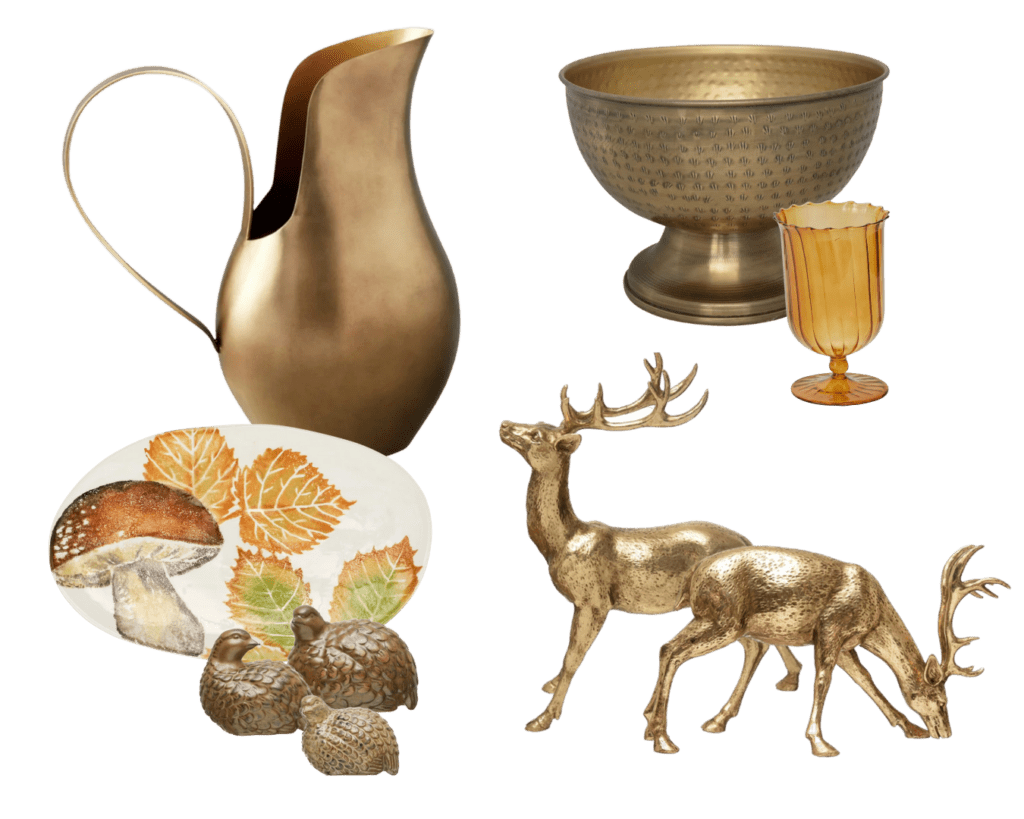
Aged Bronze Cobbled Pitcher, $90
Mushroom Platter, $133
Glazed Ceramic Quails, Set of 3, $25
Antiqued Brass Footed Bowl, $50
April Amber Glass Vase, $18
Gold Standing Deer Figure, $55
Gold Feeding Deer Figure, $50
At the base, I like to use a simple garland for texture and a pop of color. I add smaller odds and ends, such as butter dishes and salt and pepper shakers. For the middle level, I will include a central element, such as a decorative figure or a bowl filled with small pumpkins. Adding lighting also creates extra ambiance. While candles are a classic choice, I enjoy using cordless table lamps, as they are low-profile and modern, and I don’t have to worry about wax drippings! Finally, I will add the top level, which typically has a tall but slender vase and a seasonal flower arrangement.
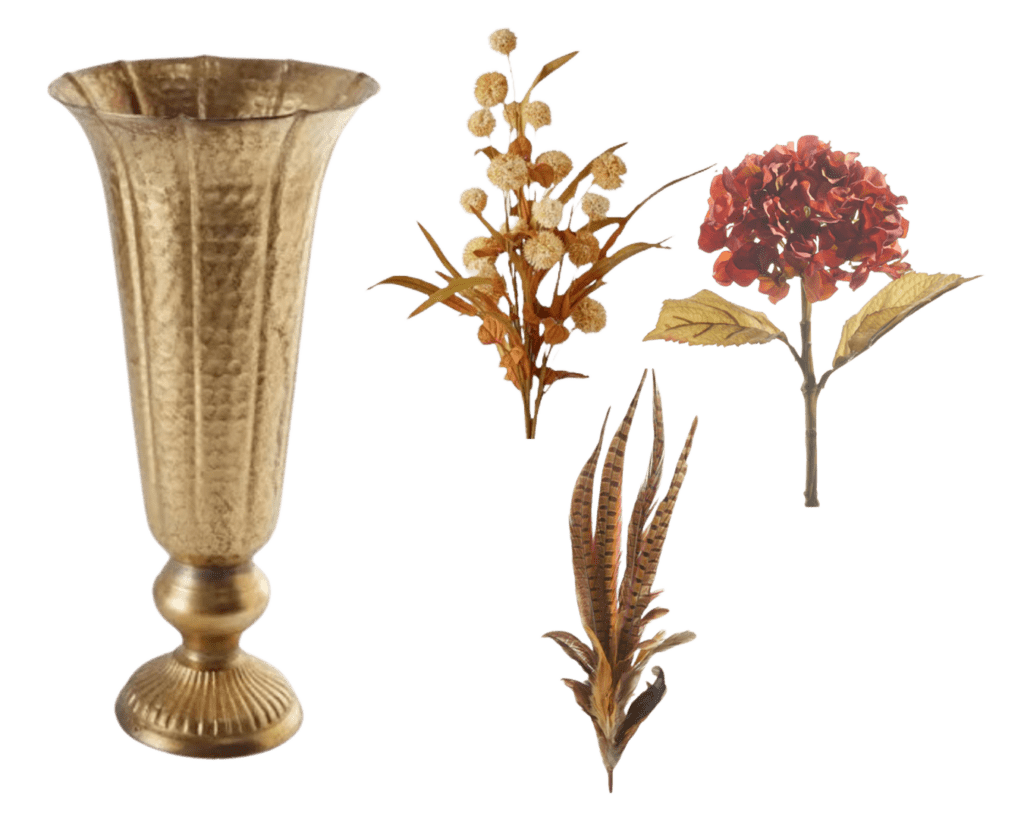
Vita Gold Vase, $40
Faux Pom Pom Bush Spray, $19
Mixed Pheasant Feather Spray, $21
Faux Dried Red Hydrangea Spray, $12
After the centerpiece is complete, I place my dishes and glasses. I like to keep the layout simple yet elevated, using a charger, a dinner plate, and, depending on the menu, a salad plate or small bowl. These elements are also perfect for playing with color or mixing patterns, adding dimension and interest. If the gathering is casual, the napkins will be folded flat to the side with flatware resting on top. If the mood is formal, the napkins will be folded on the plates in a decorative manner, such as fanned, knotted, or bowtie.
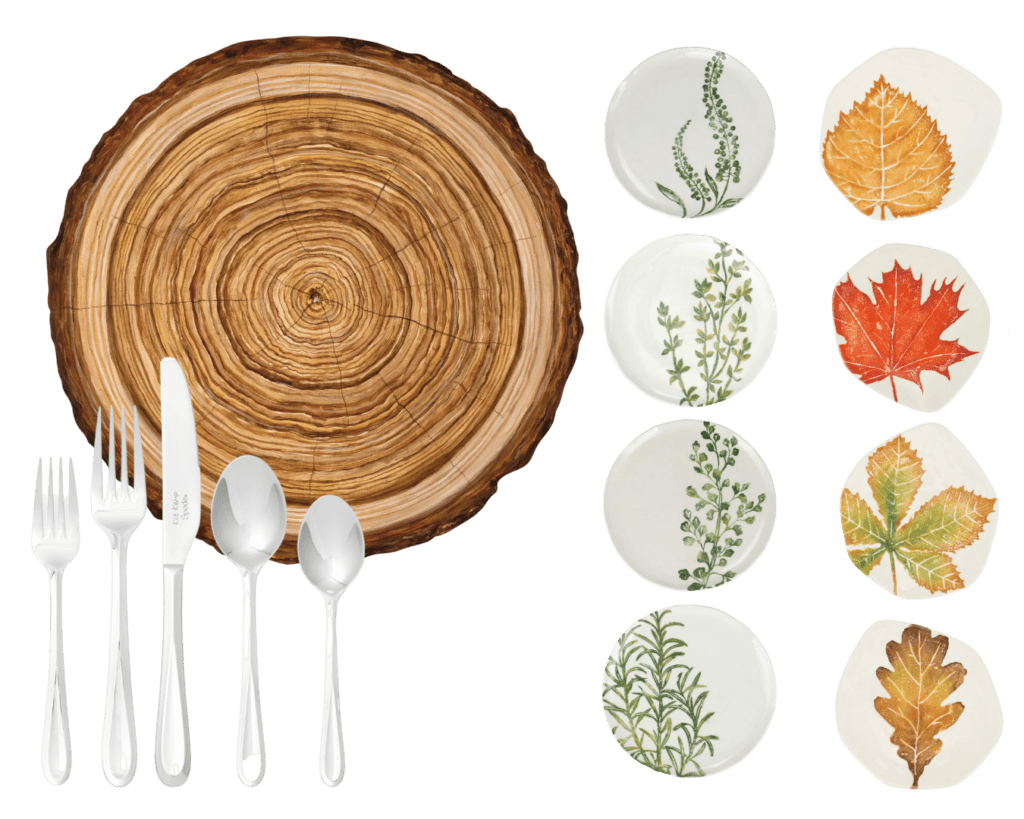
Wood Slice Paper Placemats, Pack of 12, $38
Scoop Stainless Steel Flatware, Five-piece Set, $125
Flora Fauna Plates, Set of 4, $200
Autunno Salad Plates, Set of 4, $195
Next, I choose my glassware. I like to include a variety but will limit my selection to three styles to minimize clutter. My go-to choices are wine glasses, cordial glasses, and water tumblers, creating a simple sophistication. Glassware offers yet another opportunity to add an accent of color, though I always make sure my glasses coordinate with each other. Once the glasses are in place, the table is complete! Now all that’s left is to enjoy.
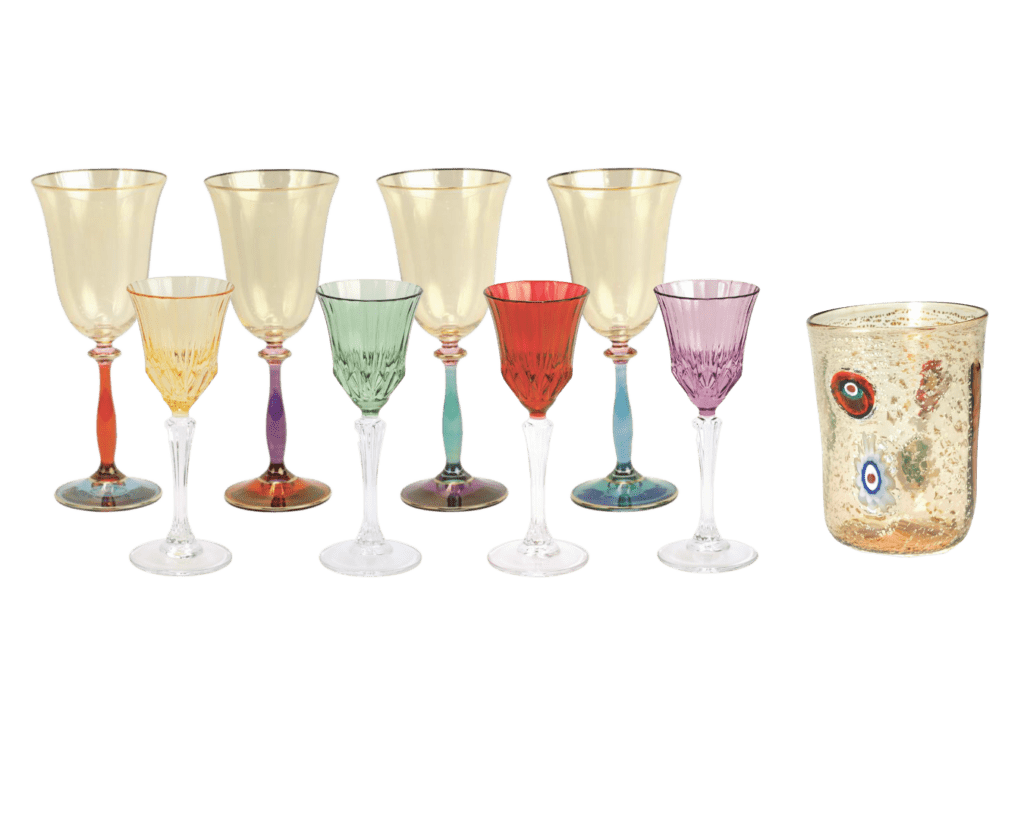
Regalia Wine Glasses, Set of 4, $300
Regalia Cordial Glasses, Set of 4, $205
Amber Murano Glass Tumbler, $110
You can recreate our autumn tablescape with these unique and beautiful items from our Museum Store.
Winterthur’s e-commerce shop is not ready yet, but we are still here to help. To purchase any of these items, visit our Museum Store Monday–Sunday, 10:00 am–5:00 pm or during our extended evening hours on Wednesdays in December. You can also take advantage of our shopping concierge service! Simply call 302.888.4822 or email museumstore@winterthur.org, and our staff will help you select the item. Admission to Winterthur is not required to visit the Museum Store.
